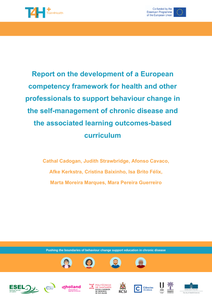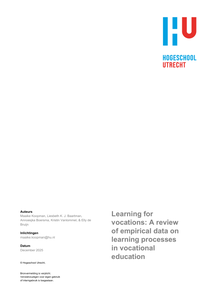(‘Co’-)Designing for healthy behaviour greatly benefits from integrating insights about individual behaviour and systemic influences. This study reports our experiences in using insights about individual and systemic determinants of behaviour to inform a large co-design project. To do so, we used two design tools that encourage focusing on individual determinants (Behavioural Lenses Approach) and social / systemic aspects of behaviour (Socionas). We performed a qualitative analysis to identify 1) when and how the team applied the design tools, and 2) how the tools supported or obstructed the design process. The results show that both tools had their distinctive uses during the process. Both tools improved the co-design process by deepening the conversations and underpinnings of the prototypes. Using the Behavioural Lenses under the guidance of a behavioural expert proved most beneficial. Furthermore, the Socionas showed the most potential when interacting with stakeholders, i.c. parents and PPTs.
MULTIFILE

A promising contribution of Learning Analytics is the presentation of a learner's own learning behaviour and achievements via dashboards, often in comparison to peers, with the goal of improving self-regulated learning. However, there is a lack of empirical evidence on the impact of these dashboards and few designs are informed by theory. Many dashboard designs struggle to translate awareness of learning processes into actual self-regulated learning. In this study we investigate a Learning Analytics dashboard based on existing evidence on social comparison to support motivation, metacognition and academic achievement. Motivation plays a key role in whether learners will engage in self-regulated learning in the first place. Social comparison can be a significant driver in increasing motivation. We performed two randomised controlled interventions in different higher-education courses, one of which took place online due to the COVID-19 pandemic. Students were shown their current and predicted performance in a course alongside that of peers with similar goal grades. The sample of peers was selected in a way to elicit slight upward comparison. We found that the dashboard successfully promotes extrinsic motivation and leads to higher academic achievement, indicating an effect of dashboard exposure on learning behaviour, despite an absence of effects on metacognition. These results provide evidence that carefully designed social comparison, rooted in theory and empirical evidence, can be used to boost motivation and performance. Our dashboard is a successful example of how social comparison can be implemented in Learning Analytics Dashboards.
MULTIFILE

Chronic diseases represent a significant burden for the society and health systems; addressing this burden is a key goal of the European Union policy. Health and other professionals are expected to deliver behaviour change support to persons with chronic disease. A skill gap in behaviour change support has been identified, and there is room for improvement. Train4Health is a strategic partnership involving seven European Institutions in five countries, which seeks to improve behaviour change support competencies for the self-management of chronic disease. The project envisages a continuum in behaviour change support education, in which an interprofessional competency framework, relevant for those currently practising, guides the development of a learning outcomes-based curriculum and an educational package for future professionals (today’s undergraduate students).
DOCUMENT

On the internet we see a continuously growing generation of web applications enabling anyone to create and publish online content in a simple way, to link content and to share it with others: wellknown instances include MySpace, Facebook, YouTube, Flickr, Wikipedia and Google Earth. The internet has become a social software platform sailing under the Web 2.0 flag, creating revolutionary changes along the way: the individual, the end-user, comes first and can benefit optimally from an environment which has the following keywords: radically user-oriented, decentralized, collective and massive. ‘An environment in which each participant not only listens, but can also make his own voice heard’: the Social Web. This document describes a brief exploration of this Social Web and intends to gain insight in possible fundamental changes this phenomenon is causing or might cause in our society. Particular attention will be paid to the impact of the Social Web on learning and education. For how do two apparently contrary developments touch and overlap? On the one side we have the rapid growth of technologies bringing individuals together to communicate, collaborate, have fun and acquire knowledge (social software). And on the other hand we have the just conviction within the world of education that young people should not only acquire knowledge and information, but should also have all kinds of skills and experience in order to meet social and technological changes deliberately, and prepare for a life long of learning.
DOCUMENT

Specific approaches are needed to reach and support people with a lower socioeconomic position (SEP) to achieve healthier eating behaviours. There is a growing body of evidence suggesting that digital health tools exhibit potential to address these needs because of its specific features that enable application of various behaviour change techniques (BCTs). The aim of this scoping review is to identify the BCTs that are used in diet-related digital interventions targeted at people with a low SEP, and which of these BCTs coincide with improved eating behaviour. The systematic search was performed in 3 databases, using terms related to e/m-health, diet quality and socioeconomic position. A total of 17 full text papers were included. The average number of BCTs per intervention was 6.9 (ranged 3–15). BCTs from the cluster ‘Goals and planning’ were applied most often (25x), followed by the clusters ‘Shaping knowledge’ (18x) and ‘Natural consequences’ (18x). Other frequently applied BCT clusters were ‘Feedback and monitoring’ (15x) and ‘Comparison of behaviour’ (13x). Whereas some BCTs were frequently applied, such as goal setting, others were rarely used, such as social support. Most studies (n = 13) observed a positive effect of the intervention on eating behaviour (e.g. having breakfast) in the low SEP group, but this was not clearly associated with the number or type of applied BCTs. In conclusion, more intervention studies focused on people with a low SEP are needed to draw firm conclusions as to which BCTs are effective in improving their diet quality. Also, further research should investigate combinations of BCTs, the intervention design and context, and the use of multicomponent approaches. We encourage intervention developers and researchers to describe interventions more thoroughly, following the systematics of a behaviour change taxonomy, and to select BCTs knowingly.
DOCUMENT

Background Anxiety and challenging behaviour (CB) often occur simultaneously in people with intellectual disabilities (ID). Understanding the associations between anxiety and CB may contribute to more accurate diagnoses and management of both anxiety and CB in this population. Aims To examine the relationship between anxiety and CB. Methods A literature review covering the period from January 2000 to January 2012. Results Seven studies about the relationship between psychiatric disorders, including anxiety, and CB were identified. These studies confirm the relationship between anxiety and CB in people with ID, although the precise nature of this relationship remains unclear. Conclusions The study points toward the existence of a moderate association between anxiety and CB. Further research is needed to clarify the complex nature of the association between anxiety and CB.
DOCUMENT

Worldwide, schools implement social-emotional learning programs to enhance students' social-emotional skills. Although parents play an essential role in teaching these skills, knowledge about their perspectives on social-emotional learning is limited. In providing insight into the perspectives of parents from adolescent students this paper adds to this knowledge. An explorative qualitative study was conducted to gain insight into parents' perspectives on adolescent social-emotional learning. A broadly used professional framework for social emotional learning was used as a frame of reference in interviews with parents from diverse backgrounds. Within and across case analyses were applied to analyze the interviews. A conceptual model of four social-emotional skills constructs considered crucial learning by parents emerged from the data: respectful behavior, cooperation, self-knowledge and self-reliance. Parents' language, interpretations and orderings of skills indicate that the model underlying these constructs differs from skills embedded in the professional framework.
MULTIFILE

Equestrianism is currently facing a range of pressing challenges. These challenges, which are largely based on evolving attitudes to ethics and equine wellbeing, have consequences for the sport’s social licence to operate. The factors that may have contributed to the current situation include overarching societal trends, specific aspects of the equestrian sector, and factors rooted in human nature. If equestrianism is to flourish, it is evident that much needs to change, not the least,human behaviour. To this end, using established behaviour change frameworks that have been scientifically validated and are rooted in practice — most notably, Michie et al.’s COM-B model and Behaviour Change Wheel — could be of practical value for developing and implementing equine welfare strategies. This review summarises the theoretical underpinnings of some behaviour change frameworks and provides a practical, step-by-step approach to designing an effective behaviour change intervention. A real-world example is provided through the retrospective analysis of an intervention strategy that aimed to increase the use of learning theory in (educational) veterinary practice. We contend that the incorporation of effective behaviour change interventions into any equine welfare improvement strategy may help to safeguard the future of equestrianism.
DOCUMENT

Most distributed and virtual online environments for and pedagogies of computer-supported collaborative learning (CSCL) neglect the social and social-emotional aspects underlying the group dynamics of learning and working in a CSCL group. These group dynamics often determine whether the group will develop into a well-performing team and whether a sound social space emerges. Using a theory-based CSCL framework, two studies evaluated whether two tools, Radar and Reflector, supported cognitive, social and socio-emotional aspects of team development, encouraging promotive interaction and group processing in the teams. While not affecting product quality, tool use did lead to groups who perceived their team as being better developed, as having higher levels of group satisfaction and lower levels of conflicts. The results support that promotive interaction and group processing was increased by using Radar and Reflector.
DOCUMENT
This article reports on a literature review on empirical research investigating learning for vocations in the context of vocational education. We included 36 studies in which learning for vocations is empirically studied. Learning for vocations is characterised based upon prevalent research traditions in the field and framed from the perspective of vocational education and organised learning practices. This framing and characterisation directed the search terms for the review. Results show empirical data on vocational learning and illustrate how learning processes for the functions of vocational education - vocational identity development, development of a vocational repertoire of actions, and vocational knowledge development - actually take place. The review further shows that, empirical illustrations of learning processes that occur in the context of vocational education and organised learning practices are relatively scarce. The findings can be typified in relation to our theoretical framework in terms of three learning processes, that is learning as a process of (a) belonging, becoming, and being, (b) recontextualization, and (c) negotiation of meaning and sense-making. We argue that more empirical research should be carried out, using the functions of vocational education and the three learning processes to better understand vocational learning.
DOCUMENT
